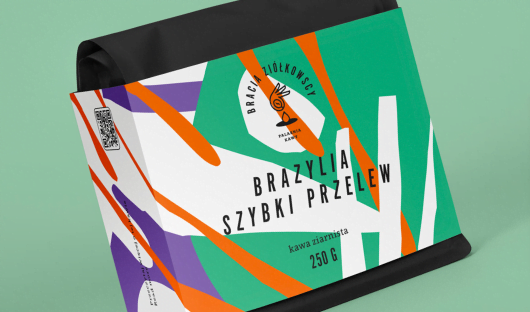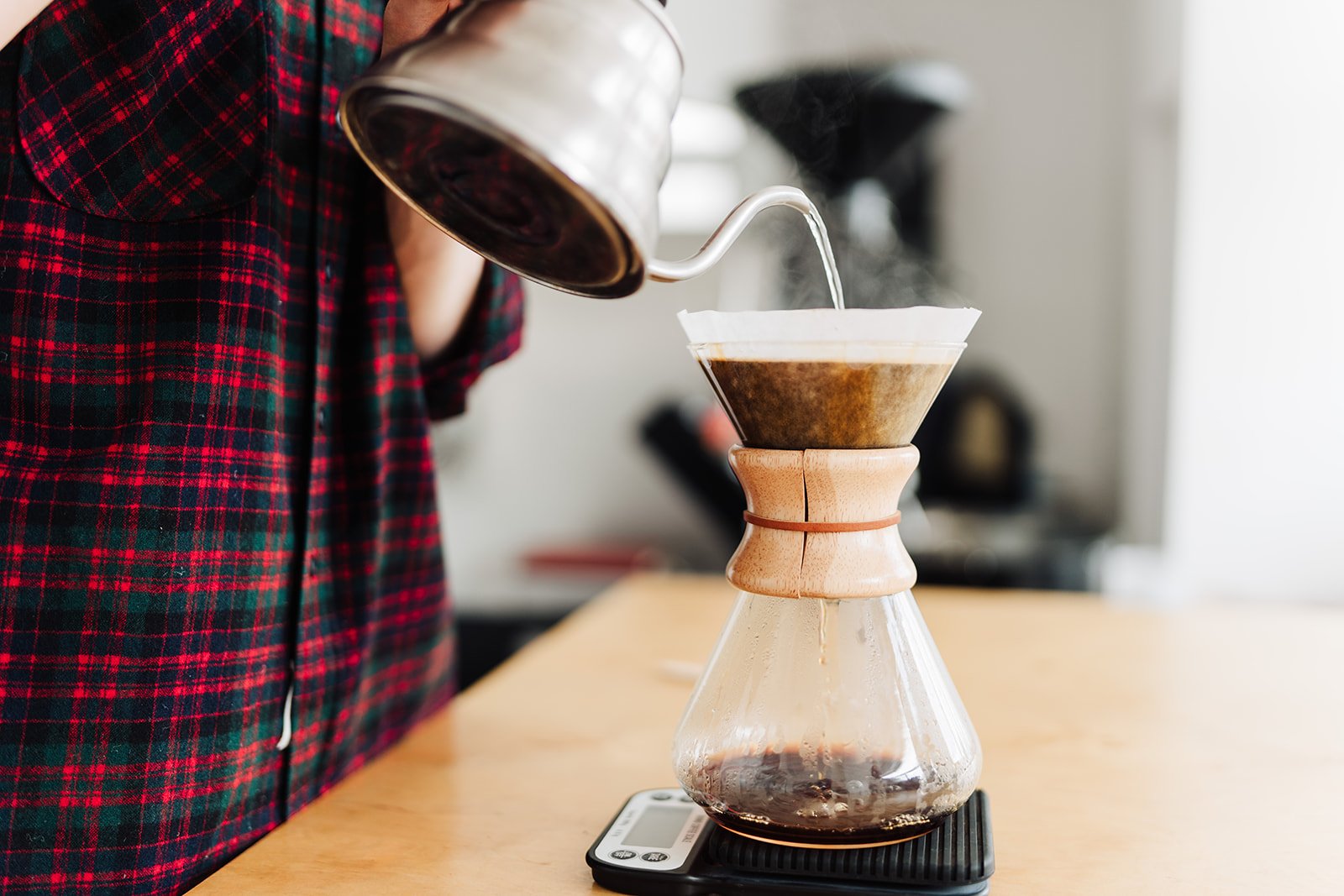
Not sure which coffee to choose?
Find the perfect coffee with a simple quiz!

Many coffee consumers are used to drinking their coffee as brewed in a coffee machine, a cafetiere or a desalinated glass.
Pour-over methods give us a very different brew. When first encountering coffees from a drip, aeropress or Chemex, people often react with surprise - is that coffee too?
The difference is not only about the brewing method used. It is also about the roasting profile. It is much lighter than that of 'traditional' coffees. This is due to the different temperature management of the roaster as well as the time the coffee is roasted. It spends considerably less time in the roaster than for espresso coffee. The combination of roasting and pour-over brewing methods helps one to perceive that the coffee comes from a fruit growing on trees. In the aroma of coffees brewed this way, one can detect fruit, flowers and many other attractive notes. It is not uncommon when first encountering decanted coffees to get the impression that they are artificially flavoured. However, these are their natural characteristics.
This method was developed by the Japanese company Hario, but is based on the old concept of brewing coffee by pouring the brew through a paper filter. There are many similar methods (e.g. Melita, Tiamo, various pour-over coffee makers), but we present the Hario dripper as the most popular.
Suggested method of preparation:
It is worth experimenting with different parameters for brewing coffee. In particular, we recommend checking out the brewing method proposed by James Hoffmann (Polish subtitles can be included):
The device was invented in 2005 by American Alan Adler as a substitute for a pressurised espresso machine. "The syringe" has, however, taken off as one of the specialty coffee industry's favourite tools, and the brew comes out decidedly different to that from a pressure machine.
Suggested method of preparation:

Get 10% discount for your first purchase and keep up to date with news and bargains.

